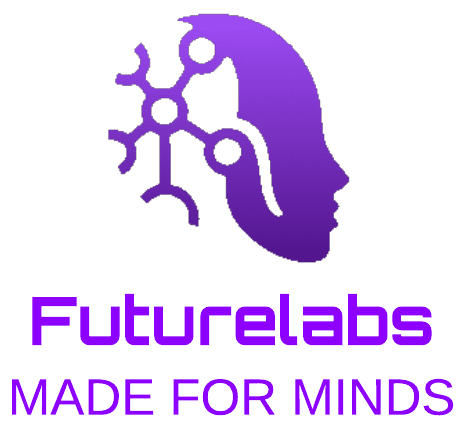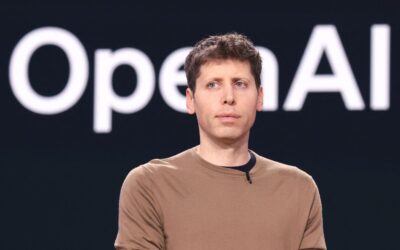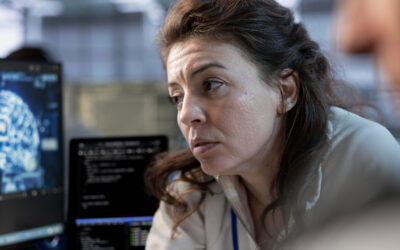A Journey from Imagination to Everyday Reality
Artificial intelligence, that phrase now echoing through laboratories, companies, and homes, began as a dream woven between myths and equations. At its core, it is the ability of machines to perform tasks that, until recently, required human intelligence: learning from experience, recognizing patterns, making decisions, and even creating. But its history is not merely a succession of algorithms and circuits; it is a tale of ambition, epic failures, and reinventions that have transformed our relationship with technology.
It all started in the mists of imagination. The ancient Greeks spoke of Talos, a bronze giant who protected Crete, and medieval alchemists dreamed of homunculi, artificial beings. However, the true starting point occurred in 1950, when Alan Turing, a British mathematician who decoded Nazi codes during World War II, posed an unsettling question: Can machines think? His article “Computing Machinery and Intelligence” not only proposed the famous Turing test — in which a machine must convince a human that it is another human — but also sparked the flame of a revolution.
In 1956, during a conference at Dartmouth, United States, a group of scientists — led by John McCarthy, who coined the term artificial intelligence — gathered to explore how to create machines capable of simulating intelligence. They were optimistic: they believed that within a decade, general AI — that is, an artificial mind with human abilities — would be achieved. But they soon faced harsh reality. Computers in the 1950s, with their limited power and wardrobe-sized memories, could barely solve basic problems. Still, pioneering projects were born: ELIZA, a 1960s chatbot that simulated a psychotherapist, or Shakey, the first mobile robot capable of analyzing its environment.
The 1980s brought a new approach: expert systems, programs that mimicked the knowledge of specialists in fields like medicine or geology. MYCIN, for example, diagnosed bacterial infections with accuracy comparable to that of doctors. But these systems were fragile: if a situation went beyond their programming, they failed dramatically. The lack of adaptability, coupled with unfulfilled promises, led to two AI winters — periods of skepticism and funding cuts — that lasted until the late 1990s.
The renaissance arrived with the new millennium, driven by three forces: data, computational power, and algorithms. The internet generated massive amounts of information, graphics processing units (GPUs) enabled it to be processed at previously unthinkable speeds, and new machine learning techniques gave machines the ability to learn on their own. In 2012, a milestone marked the path: AlexNet, a neural network that won an image recognition contest with revolutionary accuracy. It was proof that deep learning — deep neural networks inspired by the human brain — could solve complex problems.
The 2010s saw AI infiltrate daily life. Assistants like Siri and Alexa became common, Netflix and Spotify algorithms learned our tastes, and autonomous cars began navigating roads. But the most iconic moment came in 2016, when AlphaGo, a system from Google DeepMind, defeated the world champion of Go, an ancient game considered more complex than chess. The machine not only won: it did so with creative moves that baffled experts.
Today, AI is no longer a passive tool. With the rise of generative AI, machines not only analyze — they create. Models like OpenAI’s GPT-4 write essays, solve math problems, and hold fluid conversations. DALL·E and Midjourney generate realistic images from text descriptions, while tools like GitHub Copilot write code as if they had decades of experience. These breakthroughs are based on architectures like transformers, which process language and images by detecting patterns in millions of examples.
In medicine, AI is saving lives. AlphaFold, another marvel from DeepMind, predicts protein structures with an accuracy that accelerates drug development. Algorithms diagnose cancers in X-rays with success rates comparable to expert radiologists, and projects like the startup Insilico Medicine use AI to design drugs in months, not years. In agriculture, drones with sensors optimize harvests; in the climate fight, models predict natural disasters or design materials to capture CO₂.
But This Power Brings Deep Dilemmas
The same algorithms that recommend movies can perpetuate racial or gender biases if trained on flawed data. In 2018, for example, it was discovered that an Amazon recruitment system discriminated against women because it was based on historical résumés from a male-dominated industry. Artificial Intelligence also raises existential challenges: deepfakes — hyper-realistic fake videos — threaten to erode trust in institutions, while automation could eliminate millions of jobs, especially in routine sectors.
Faced with these risks, governments and organizations are seeking ethical frameworks. The European Union is leading with regulations that classify Artificial Intelligence applications according to their level of risk, banning uses such as indiscriminate facial recognition. Meanwhile, researchers like Timnit Gebru and Joy Buolamwini, founder of the Algorithmic Justice League, advocate for transparent and auditable AI. Even giants like OpenAI and Google have implemented safeguards to prevent their models from generating harmful content.
The future of AI is a canvas of possibilities and unanswered questions. Will we eventually create artificial general intelligence (AGI), a machine with human-like consciousness and versatility? Experts like Yoshua Bengio believe it is still decades away, while others, like Elon Musk, urge preparation for its risks. In the meantime, quantum artificial intelligence — the fusion of algorithms with quantum computing — promises to solve problems currently out of reach, such as room-temperature superconductivity or the design of clean energy sources.
On this journey, perhaps the most remarkable aspect is not the technology itself, but how it is redefining what it means to be human. AI forces us to rethink creativity, privacy, and even ethics. It reminds us that although machines can mimic our intelligence, wisdom — that blend of empathy, morality, and context — remains the exclusive domain of the human mind. That is why the true challenge is not building smarter machines, but ensuring their evolution reflects the best of us: curiosity, compassion, and an unwavering commitment to the common good.
Artificial intelligence is no longer science fiction. It is a mirror reflecting our capabilities, our biases, and our hopes. And like any mirror, its value lies not in what it shows, but in what we choose to do with that reflection.






0 Comments